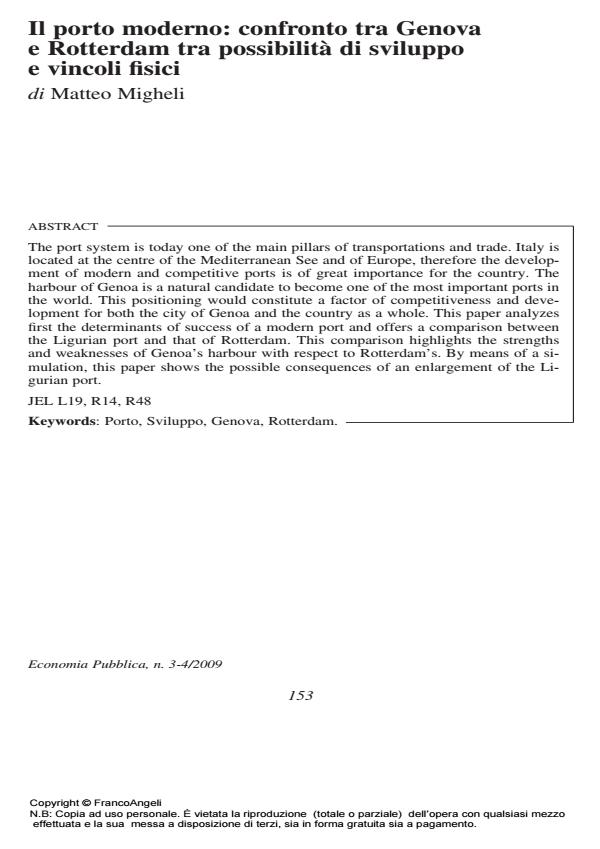Il porto moderno: confronto tra Genova e Rotterdam tra possibilità di sviluppo e vincoli fisici
Titolo Rivista ECONOMIA PUBBLICA
Autori/Curatori Matteo Migheli
Anno di pubblicazione 2010 Fascicolo 2009/3-4
Lingua Italiano Numero pagine 18 P. 153-170 Dimensione file 890 KB
DOI 10.3280/EP2009-003006
Il DOI è il codice a barre della proprietà intellettuale: per saperne di più
clicca qui
Qui sotto puoi vedere in anteprima la prima pagina di questo articolo.
Se questo articolo ti interessa, lo puoi acquistare (e scaricare in formato pdf) seguendo le facili indicazioni per acquistare il download credit. Acquista Download Credits per scaricare questo Articolo in formato PDF

FrancoAngeli è membro della Publishers International Linking Association, Inc (PILA)associazione indipendente e non profit per facilitare (attraverso i servizi tecnologici implementati da CrossRef.org) l’accesso degli studiosi ai contenuti digitali nelle pubblicazioni professionali e scientifiche
The port system is today one of the main pillars of transportations and trade. Italy is located at the centre of the Mediterranean See and of Europe, therefore the development of modern and competitive ports is of great importance for the country. The harbour of Genoa is a natural candidate to become one of the most important ports in the world. This positioning would constitute a factor of competitiveness and development for both the city of Genoa and the country as a whole. This paper analyzes first the determinants of success of a modern port and offers a comparison between the Ligurian port and that of Rotterdam. This comparison highlights the strengths and weaknesses of Genoa’s harbour with respect to Rotterdam’s. By means of a simulation, this paper shows the possible consequences of an enlargement of the Ligurian port.
Parole chiave:Porto, Sviluppo, Genova, Rotterdam.
Jel codes:L19, R14, R48
Matteo Migheli, Il porto moderno: confronto tra Genova e Rotterdam tra possibilità di sviluppo e vincoli fisici in "ECONOMIA PUBBLICA " 3-4/2009, pp 153-170, DOI: 10.3280/EP2009-003006